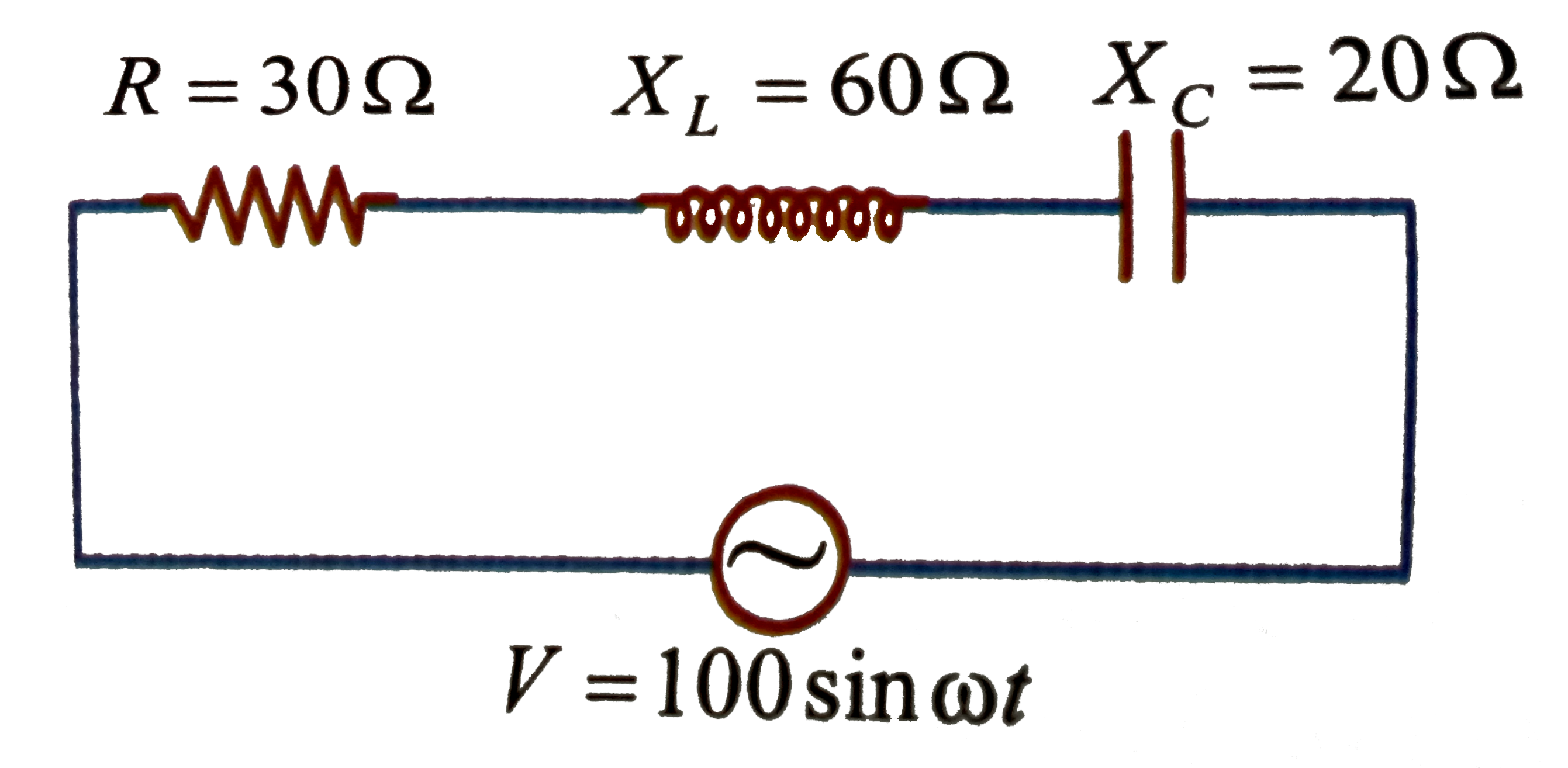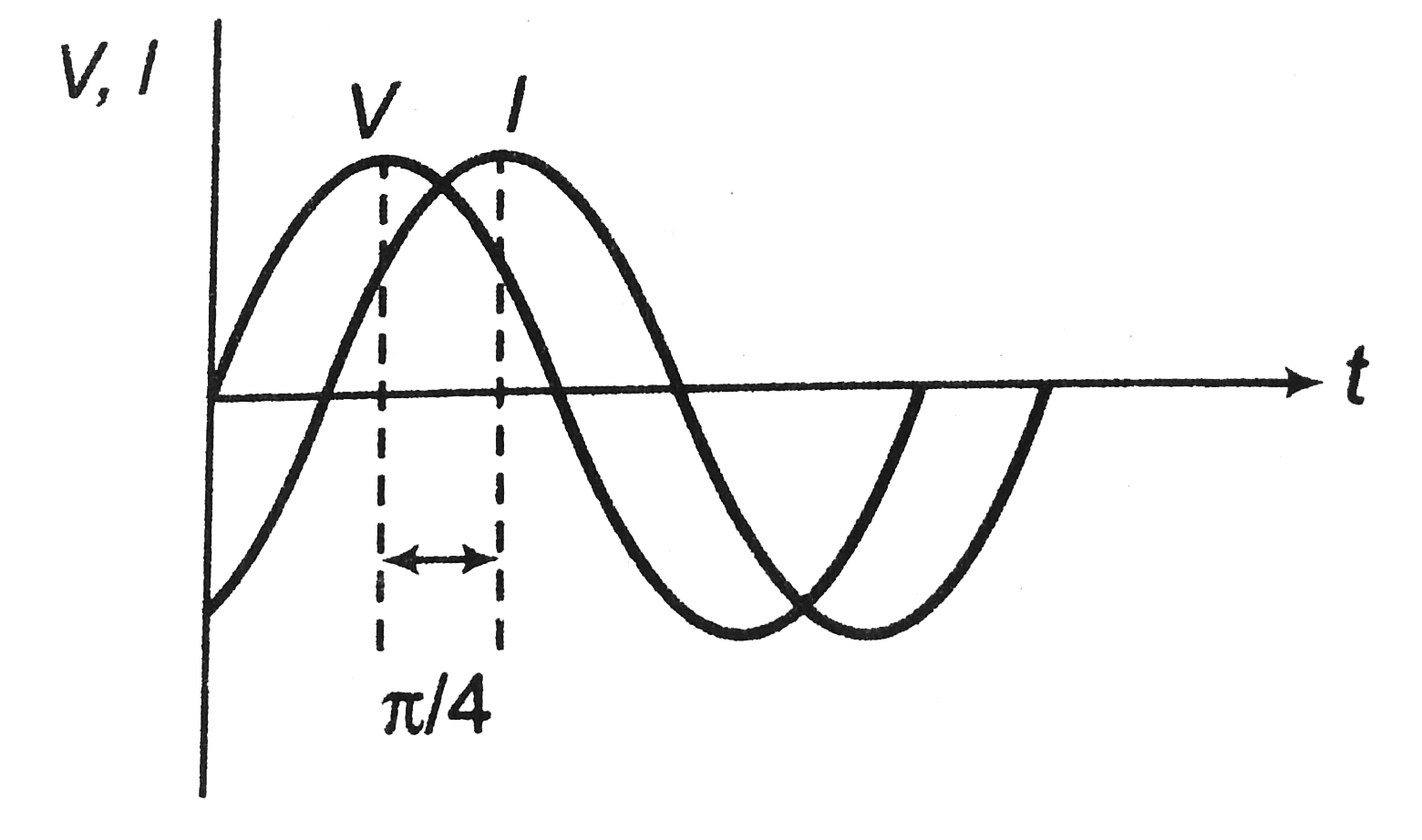An alternating potential E=E0sinωt is applied to a series L-C circuit. What is the phase difference between the voltage across L and C?
π2
π
3π2
zero
The correct Answer is:B
For L,E=E0sin(ωt+π/2)
For C, E=E0sin(ωt−π/2)
∴ phase difference = π.
Topper's Solved these Questions
- BOOK - MARVEL PUBLICATIONCHAPTER - ELECTROMAGNETIC INDUCTION AND ALTERNATING CURRENTS EXERCISE - TEST YOUR GRASP - 1630videos
ELECTROMAGNETIC INDUCTION AND ALTERNATING CURRENTS
- BOOK - MARVEL PUBLICATIONCHAPTER - ELASTICITYEXERCISE - Test Your Grasp - 515videos
ELASTICITY
- BOOK - MARVEL PUBLICATIONCHAPTER - ELECTRONS AND PHOTONS EXERCISE - TEST YOUR GRASP - 1715videos
ELECTRONS AND PHOTONS
Similar Questions
A series circuit consisting of a capacitor XC=80Ω and a coil with active resistance R=300Ω and inductance XL=40ω is connected to a source of alternating voltage with amplitude V0=200V Find
(a) the current amplitude in the circuit
(b) the phase difference between the current and voltage
(c) the amplitudes of voltage across the capacitor and the coli .View SolutionThe alternating emf of e=e0 sin ωt is applied across LR series circuit. The impedance and phase angle between current and voltage is
View Solution
Knowledge Check
- Question 1 - Select One
Phase difference between voltages across L and C in series is
A0∘B90∘C180∘D360∘ - Question 2 - Select One
In series LCR circuit, the phase difference between voltage across L and voltage across C is
AZeroBπCπ2D2π - Question 3 - Select One
In a LCR series circuit, if the phase difference between applied voltage and current is zero then
AXL=XCBXL>XCCXL<XCDnone of these
An alternating voltage V=100sinωt is applied across an LCR circuit as shown. At the instant when voltage drop across source is 50√3 volts then at that instant
R=30Ω XL=60Ω XC=20Ω
 View Solution
View SolutionAn alternating e.m.f. of 100V (rms) is applied to a series LCR circuit. At resonance, the potential difference across the inductance and across the capacitance is 400V each. The potential difference across the resistance will be
View SolutionIn an AC circuit XC=XL. The phase differe3nce between the current and voltage will be
View SolutionAn Ac voltage V=V0sin100t is applied to the circuit, the phase difference between current and voltage is found to be π4, then
 .View Solution
.View SolutionThe phase difference between voltage and current in series L-C circuit is
View Solution

